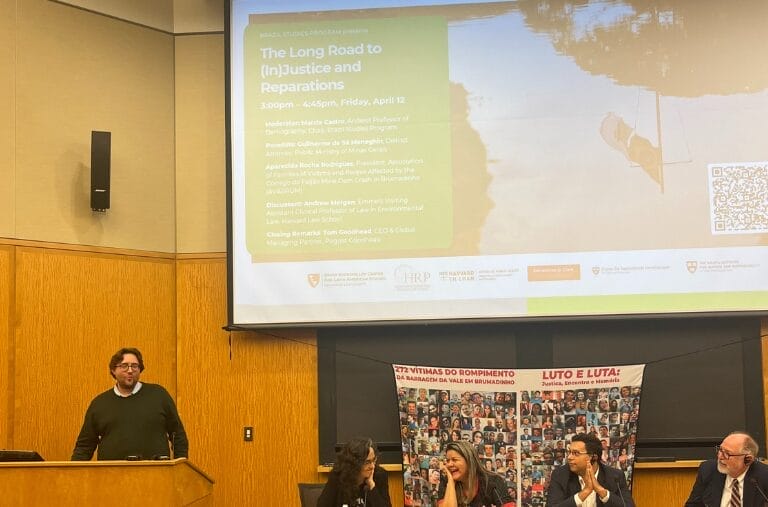Instructing a solicitor and starting a case, especially against a large, well-resourced defendant, can seem like a daunting task.
To help our current and prospective clients understand the roles and responsibilities in a group litigation claim, and to advise what will be required of you to start and progress your case, we have outlined here the seven steps necessary to successfully complete your claim.
Generally, most client’s claims will follow a standard three-point pathway:
- Signing up with the firm
- Providing instructions and details of your specific claim to the solicitors
- Agreeing your schedule of information.
You will also be required to provide continuing and prompt instructions throughout the lifecycle of your case. There are other bespoke tasks that may arise on specific individual cases, however, for most clients, the process is not an arduous journey.
Below are the key points of a standard case where engagement is required and what you must do at each point. Please be aware that, on each individual litigation, there may be additional steps required for clients to complete.
Stage one: Chatbot
This is the first step in instructing our firm to act as your solicitor in your claim.
The chatbot is designed to ask you certain questions to obtain any information necessary to establish your claim and formalize your instructions to us.
In most cases, we will ask for your name, contact details, and confirmation that you meet the criteria required to bring a claim in your selected action. Then, we will provide you with a copy of your ‘retainer pack’.
Your retainer pack is the contract and the terms and conditions of your instruction to our firm, which you will need to read through, agree to, and abide by during your claim. These are basic but important to pursue a claim. This process should not take long to complete.
It is important that you review all the documents contained in the retainer pack to confirm you are happy with the obligations you have to comply with throughout the case.
Stage two: Identity documents
As a regulated law firm, we have a legal obligation to complete Know Your Client (“KYC”) checks on every client that instructs us. We also have obligations under the Anti-Money Laundering Regulations (“AMLR”) to verify each client.
As such, it is important that you provide us with a copy of your ID documents to allow us to do this.
As part of your retainer pack, there will be information regarding what documentation is acceptable to satisfy our KYC checks.
Applicable documents include, but are not limited to:
- A copy of your passport or your driving license
- A recent bank statement or council tax bill
The sooner you provide this information, the quicker we can verify you as a client and continue to act for you.
Stage three: Questionnaire
Once our firm has taken receipt of your initial instructions from the chatbot, you will be provided with a link to a bespoke questionnaire. This link contains a series of questions for you to provide information about you and the details of your specific claim.
These questions will include, but are not limited to:
- Your personal details, such as your name and address. These are required to ensure your case can be included in the claim
- Details of your claim, including certain mandatory information which will allow us to verify your claim e.g. in an emissions case we will ask for details of your vehicle and the purchase details etc.
- The losses you have suffered as a result of the actions of the defendant.
Each litigation will ask its own specific questions which may be additional to those listed.
As part of this process, we will also ask you to upload all documentation that is relevant to your case.
This will assist us in preparing your case for submission to the defendant, and it will assist us in verifying that your case is eligible to be included in the group litigation.
Again, this process should not take long, but it is a mandatory step that each client needs to undertake.
Stage four: Schedule of Information (“SOI”)
After your questionnaire results have been received, there may be further questions sent to you to clarify the answers you have provided. Our paralegals will contact you by both email and telephone to seek clarity on your instructions before assembling your SOI.
Your SOI is a formal legal document that sets out the details of your individual claim including but not limited to who you want to bring a claim against, the losses that you suffered as a result of the actions of the defendant and importantly contains a Statement of Truth relating to the information contained in the document.
This SOI is populated from your responses to the questionnaire.
We will collate this on your behalf and we will send you a copy of this for you to review before it is submitted to the defendant.
It is extremely important that you read and review this document. If there are any changes required or if there is further information to be included, please contact us immediately to allow us to amend the document.
Once your SOI has been formalized and agreed with you, it will be submitted to the defendant at the appropriate time in the litigation.
Stage five: Notices of objection
In some cases, after we have submitted your SOI to the defendant, they will come back with a request for further information or a formal notice of objection to your case being included in the case.
We will contact those individual clients that have had either a request or a formal objection raised on their case to advise what further information we need to ensure your case can continue as part of the litigation.
In these instances, it is vitally important that you engage with us promptly to allow us to ensure your case has any objections responded to and any issues rectified.
Failure to do so may result in your case being prejudiced and, in some cases, your case being struck out or discontinued.
If either of these eventualities occur, your case will no longer continue, and it may be unable to be restored or continue.
Stage six: Continuing instructions
After the submission of your SOI to the defendant, for the majority of claimants, this will conclude the immediate tasks we need you to take at this stage of the claim.
There will be further instructions required from you at various stages in the cases, however, these will depend on a number of factors.
We will continue to update you on a quarterly basis with updates on where the case is. We will also occasionally send emails to you that require your attention and a response from you.
These emails will be highlighted to show what information or instructions we need from you. It is important you read every update that we send out to you.
Under your retainer, providing us with continuing instructions is one of the obligations you have to us and it is important for you and your case that you respond promptly to any requests for instructions we make.
Failure to do so can result in your case being prejudiced and, in some cases, your case being struck out or discontinued.
As stated, if either of these eventualities occur, your case will no longer continue, and it may be unable to be restored or continue.
Stage seven: Settlement
Once your case has settled, or the case has been won, and we have received any funds from the defendant, we will need to take instructions from you regarding payment.
It is most likely that we will use an external company to contact you to obtain your account details and allow them to make payment to you via direct bank transfer.
It will be important that you respond to their enquiries promptly to allow the transfer to take place as soon as possible.
As always, if you do have any questions about your case, please contact us on the contact details for your litigation which will be included in our correspondences, and we will be able to answer any questions you may have.
o help Pogust Goodhead’s current and prospective clients understand the roles and responsibilities in a group litigation claim, and to advise what will be required of you to start and progress your case, we have outlined here the seven steps necessary to successfully complete your claim.
Generally, most client’s claims will follow a standard three-point pathway:
- Signing up with the firm
- Providing instructions and details of your specific claim to the solicitors
- Agreeing your schedule of information.
You will also be required to provide continuing and prompt instructions throughout the lifecycle of your case. There are other bespoke tasks that may arise on specific individual cases, however, for most clients, the process is not an arduous journey.
Below are the key points of a standard case where engagement is required and what you must do at each point. Please be aware that, on each individual litigation, there may be additional steps required for clients to complete.
Stage one: Chatbot
This is the first step in instructing Pogust Goodhead to act as your solicitor in your claim.
The Pogust Goodhead chatbot is designed to ask you certain questions to obtain any information necessary to establish your claim and formalize your instructions to Pogust Goodhead.
In most cases, we will ask for your name, contact details, and confirmation that you meet the criteria required to bring a claim in your selected action. Then, we will provide you with a copy of your ‘retainer pack’.
Your retainer pack is the contract and the terms and conditions of your instruction to Pogust Goodhead, which you will need to read through, agree to, and abide by during your claim. These are basic but important to pursue a claim. This process should not take long to complete.
It is important that you review all the documents contained in the retainer pack to confirm you are happy with the obligations you have to comply with throughout the case.
Stage two: Identity documents
As a regulated law firm, we have a legal obligation to complete Know Your Client (“KYC”) checks on every client that instructs us. We also have obligations under the Anti-Money Laundering Regulations (“AMLR”) to verify each client.
As such, it is important that you provide us with a copy of your ID documents to allow us to do this.
As part of your retainer pack, there will be information regarding what documentation is acceptable to satisfy our KYC checks.
Applicable documents include, but are not limited to:
- A copy of your passport or your driving license
- A recent bank statement or council tax bill
The sooner you provide this information, the quicker we can verify you as a client and continue to act for you.
Stage three: Questionnaire
Once Pogust Goodhead has taken receipt of your initial instructions from the chatbot, you will be provided with a link to a bespoke questionnaire. This link contains a series of questions for you to provide information about you and the details of your specific claim.
These questions will include, but are not limited to:
- Your personal details, such as your name and address. These are required to ensure your case can be included in the claim
- Details of your claim, including certain mandatory information which will allow us to verify your claim e.g. in an emissions case we will ask for details of your vehicle and the purchase details etc.
- The losses you have suffered as a result of the actions of the defendant.
Each litigation will ask its own specific questions which may be additional to those listed.
As part of this process, we will also ask you to upload all documentation that is relevant to your case.
This will assist us in preparing your case for submission to the defendant, and it will assist us in verifying that your case is eligible to be included in the group litigation.
Again, this process should not take long, but it is a mandatory step that each client needs to undertake.
Stage four: Schedule of Information (“SOI”)
After your questionnaire results have been received, there may be further questions sent to you to clarify the answers you have provided. Our paralegals will contact you by both email and telephone to seek clarity on your instructions before assembling your SOI.
Your SOI is a formal legal document that sets out the details of your individual claim including but not limited to who you want to bring a claim against, the losses that you suffered as a result of the actions of the defendant and importantly contains a Statement of Truth relating to the information contained in the document.
This SOI is populated from your responses to the questionnaire.
Pogust Goodhead will collate this on your behalf and we will send you a copy of this for you to review before it is submitted to the defendant.
It is extremely important that you read and review this document. If there are any changes required or if there is further information to be included, please contact us immediately to allow us to amend the document.
Once your SOI has been formalized and agreed with you, it will be submitted to the defendant at the appropriate time in the litigation.
Stage five: Notices of objection
In some cases, after we have submitted your SOI to the defendant, they will come back with a request for further information or a formal notice of objection to your case being included in the case.
We will contact those individual clients that have had either a request or a formal objection raised on their case to advise what further information we need to ensure your case can continue as part of the litigation.
In these instances, it is vitally important that you engage with us promptly to allow us to ensure your case has any objections responded to and any issues rectified.
Failure to do so may result in your case being prejudiced and, in some cases, your case being struck out or discontinued.
If either of these eventualities occur, your case will no longer continue, and it may be unable to be restored or continue.
Stage six: Continuing instructions
After the submission of your SOI to the defendant, for the majority of claimants, this will conclude the immediate tasks we need you to take at this stage of the claim.
There will be further instructions required from you at various stages in the cases, however, these will depend on a number of factors.
We will continue to update you on a quarterly basis with updates on where the case is. We will also occasionally send emails to you that require your attention and a response from you.
These emails will be highlighted to show what information or instructions we need from you. It is important you read every update that we send out to you.
Under your retainer, providing us with continuing instructions is one of the obligations you have to us and it is important for you and your case that you respond promptly to any requests for instructions we make.
Failure to do so can result in your case being prejudiced and, in some cases, your case being struck out or discontinued.
As stated, if either of these eventualities occur, your case will no longer continue, and it may be unable to be restored or continue.
Stage seven: Settlement
Once your case has settled, or the case has been won, and we have received any funds from the defendant, we will need to take instructions from you regarding payment.
It is most likely that we will use an external company to contact you to obtain your account details and allow them to make payment to you via direct bank transfer.
It will be important that you respond to their enquiries promptly to allow the transfer to take place as soon as possible.
As always, if you do have any questions about your case, please contact Pogust Goodhead on the contact details for your litigation which will be included in our correspondences, and we will be able to answer any questions you may have.









